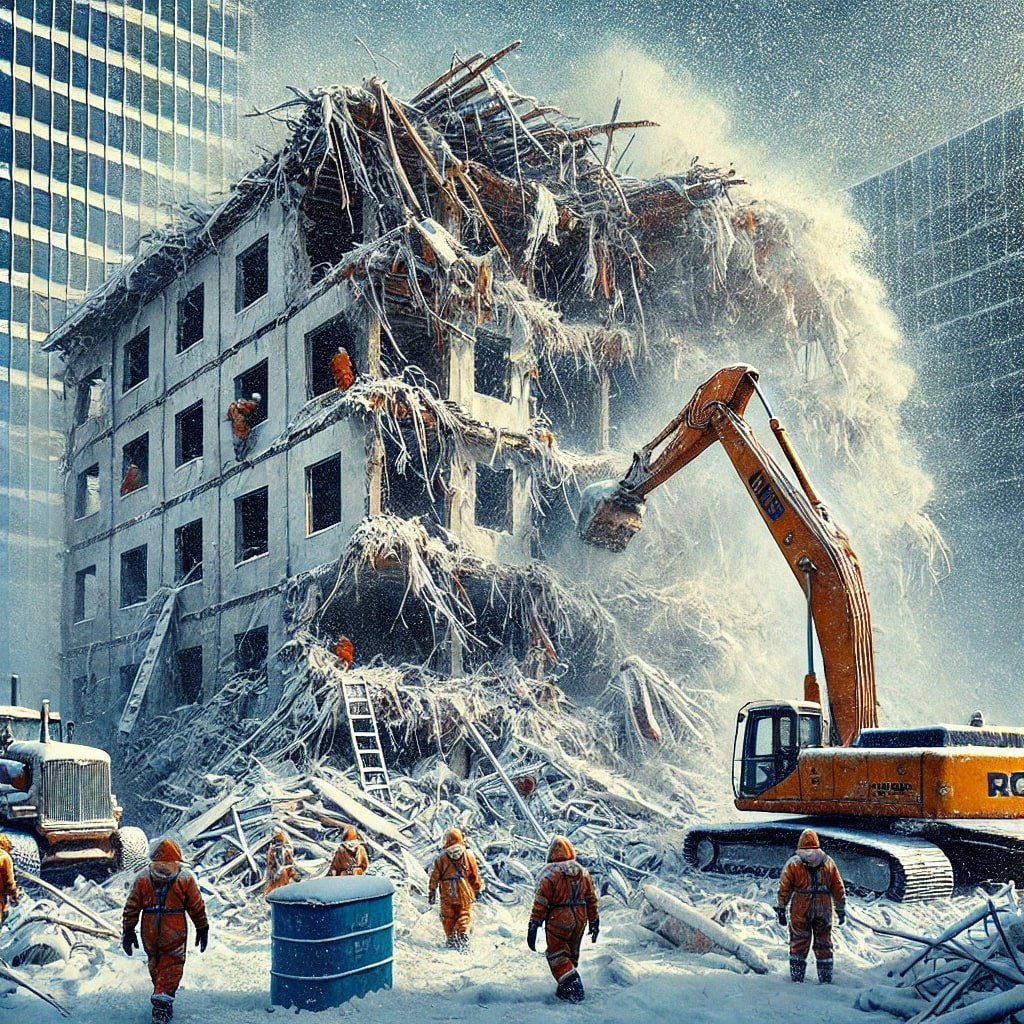Winter in Canada presents a unique set of challenges for demolition projects, with harsh weather conditions that can impact safety, efficiency, and project timelines. From freezing temperatures to snow and ice, Canadian demolition companies must navigate a range of issues to keep their operations running smoothly during the cold months. In this blog, we’ll explore the specific challenges faced during winter demolitions and provide practical solutions to address them.
Challenges of Winter Demolition
1. Harsh Weather Conditions
The severe cold can significantly affect both machinery and materials used in demolition. Hydraulic equipment can become less efficient, and metal structures may become brittle and more prone to breaking.
2. Safety Concerns
Worker safety is a paramount concern in demolition, and winter weather increases the risk of accidents. Icy conditions can lead to slips and falls, and visibility can be severely reduced during snowfalls or blizzards.
3. Environmental Regulations
Winter conditions can complicate compliance with environmental regulations. For example, snow and melting ice can cause runoff issues, potentially leading to environmental contamination if not properly managed.
4. Access and Mobility
Snow and ice can hinder access to sites and mobility around them, making it difficult to transport materials and equipment. This can delay projects and increase costs due to extended timelines and additional labor to clear snow.
Solutions for Winter Demolition
1. Enhanced Planning and Scheduling
Planning becomes even more critical during winter months. Scheduling work during milder periods, continuously monitoring weather forecasts, and building in flexible buffer times can help mitigate weather-related delays.
2. Specialized Equipment and Materials
Using cold-weather oils and fluids can keep machinery running smoothly in freezing temperatures. Equipment designed for cold climates, such as those with enclosed cabs and enhanced heating systems, can improve efficiency and worker comfort.
3. Safety Training and Gear
Providing additional safety training focused on winter hazards is crucial. Equipping workers with proper winter gear, including slip-resistant footwear and thermal clothing, can prevent accidents and improve performance.
4. Environmental Safeguards
Implementing measures to manage snow and ice runoff is important for protecting the environment. This can include creating barriers to contain contaminants and using eco-friendly deicing chemicals.
5. Regular Site Maintenance
Regularly clearing snow and ice from access routes, work areas, and equipment can help maintain productivity and safety. This requires coordination and perhaps even dedicated teams depending on the size of the site.
Conclusion
Winter demolition in Canada requires careful preparation, the right tools and techniques, and an unwavering commitment to safety. By understanding the challenges and implementing effective solutions, demolition companies can maintain productivity and safety standards even under the most difficult conditions. As climate conditions continue to evolve, staying adaptable and proactive in planning will remain key to successful winter demolition operations.






